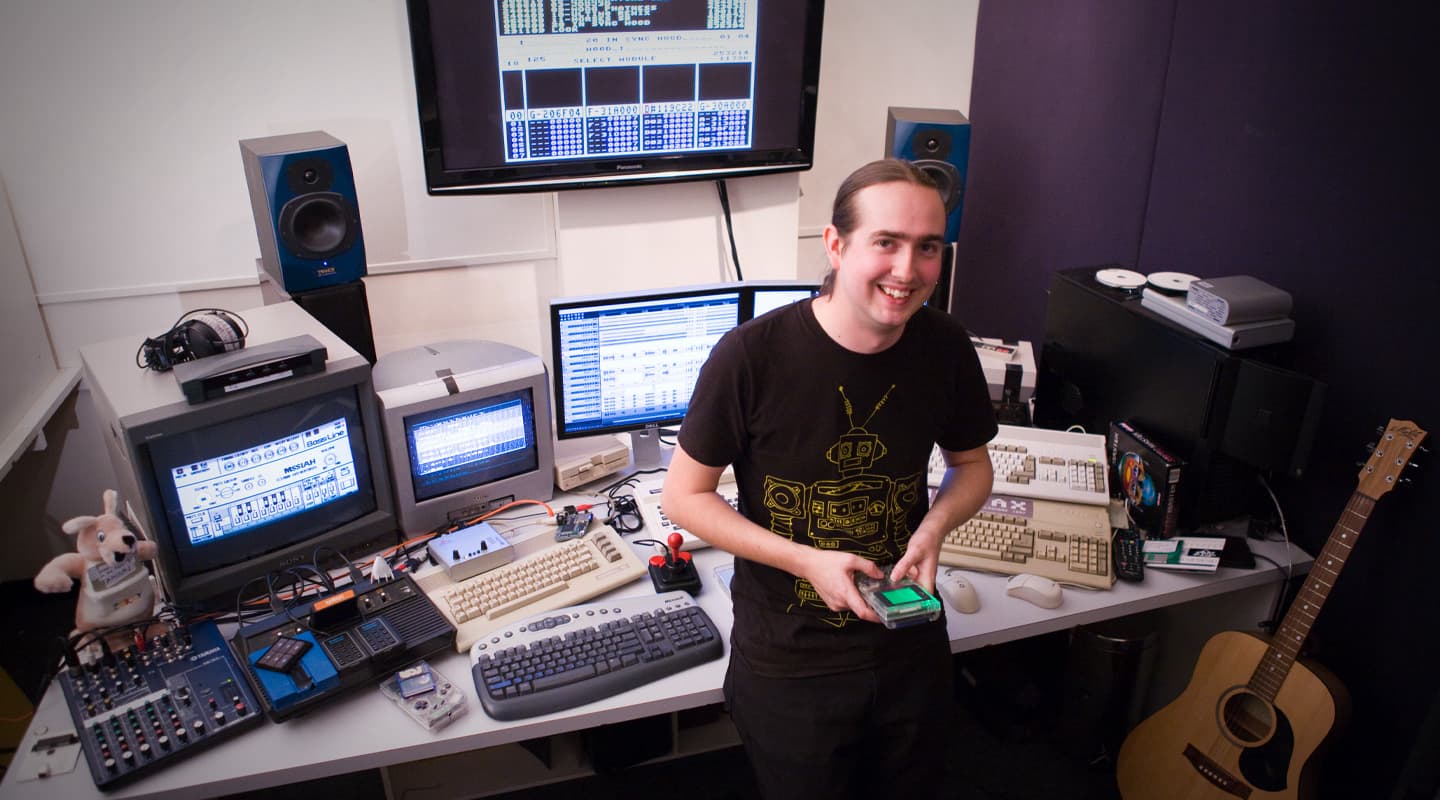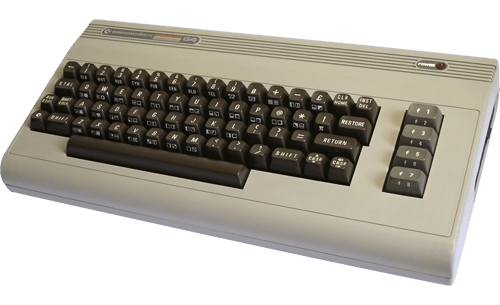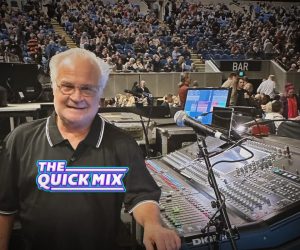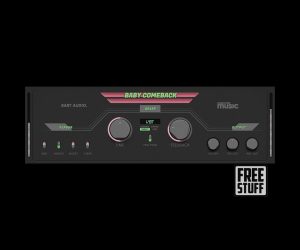
Home Grown: Chris Mylrea
For Chris Mylrea, 8-bit technology offers all the headroom required for musical excursions into the unknown. Grab your floppies and join in.
So you thought the Commodore 64, the Vic 20, the Ataris, and the Amigas were landfill? Think again, in the right hands they’re musical powerhouses. The grungy, lo-fidelity sound output from these computers has been re-harnessed and reinvigorated for a retro 8-bit ride in music construction. Chris Mylrea is one of Australia’s foremost proponents of ‘chip-music’. AT stopped by for a look around a studio based predominantly on computers manufactured 20 and 30 years ago… and some home-spun electronics to boot.
Brad Watts: I wasn’t expecting all of this Chris – evidently you’re quite the tinkerer! Half this stuff looks like it’s assembled from Jaycar kits. What’s going on?
Chris Mylrea: Oh, that’s all homemade stuff. When I was a kid I used to build my own amps and preamps. When I started playing in bands I realised it was a lot more expensive to buy that gear, so I’d sit with my Dad and build this stuff as a kid. He was an electronics engineer, so I was always learning the ropes as we tinkered on projects together. Dad worked with detection systems, and later on with early computers, so he acquired a coding background with assembly language on the early Commodore PET machines. Through my Dad’s work we had a Commodore 64 at home almost as soon as it came out. We lived in the UK at the time and I recall heading along to events like the Commodore Expo, which was massive and full of incredibly cool stuff. So I was certainly inspired by those machines and the technology from a young age.
I remember a couple of years after MIDI launched the expo had a Commodore 64 running all this MIDI gear, which really got me interested. Then when I turned 12 I got a Tascam Porta 03 for my birthday, and that was basically my entire world for years. I recorded every friend’s band, and with that comes the desire to have a studio setup, of course. It was inevitable that those early setups would include early computers like the Commodore 64.
BW: So how old are you now?
CM: Thirty.
BW: Gosh! You really did start young. You’d have been getting into this when you were five or six then?
CM: Yeah, I actually had a Covox VoiceMaster when I was five or six, which was one of the first sound digitisers for the Commodore 64. The VoiceMaster had functions where you could sing along and the C64 would display the notes on-screen and do basic sample capture for about three seconds so you could program talking clocks. But this is a Commodore 64 in 1985, so you didn’t expect that much.
Plus they weren’t the cheapest things, and accessories like the VoiceMaster were also frightfully expensive. I guess the good thing about the Commodore 64 was it was marketed as a games machine. That said, the Commodore machines came into Australia at a far more reasonable price than the Apple machines, which made them seem comparatively ‘affordable’. If you knew someone with an Apple IIe, it usually turned out that their parents had something to do with the education system, so they’d managed a discount of some description. It was far more common to find Commodore 64 and Atari ST machines back then.
The Apples did have a faster CPU than the C64, but the Commodore had dedicated graphics hardware, and of course it had the legendary SID chip inside.
Chip Music Tools of Trade

Atari 2600 (1977)
Bold & phat!
eBay: $100-200
The Atari 2600 was released with 128 bytes of RAM and 4kB cartridges. The primitive audio section offers two oscillators and 16 waveform settings. There are 32 pitches, all of which are divisions of the system clock and subsequently sound out of tune. About half the notes from a C-major scale are approximately in tune. Output is via an RF cable so a clean audio output can be tapped off Pin 13 of the TIA chip via a 1uF capacitor. Add a distortion pedal and the 2600 can demolish buildings.
Software: Synthcart, Macro assembler, Atari-X-mod (due out Dec 2010)

Commodore 64 (1982)
Warm & rounded
eBay: $30-100
The SID chip was possibly the world’s most famous 8-bit-era audio chip. The three oscillators sport wave flavours from sine to noise and there are three ring modulators, a high/low/band-pass filter, and fully programmable ADSR envelope. Finding disks is getting tricky so an emulated disk drive is now available. This cartridge allows D64 ‘virtual disk files’ to be accessed from an SD card. A DIN-based AV cable provides clean audio and video output via RCA cables.
Software: MSSIAH (cartridge), TFX, Ninja Tracker, Goat-tracker (PC/Mac with SID compiler)

Amiga 1000/500/1200 (1985)
Crunchy digital
eBay: $50-200
Sample playback like no other and tons of free software. Disable the filters and let the internal 8-bit DACs deliver a hefty four notes of polyphony with sample rates of up to a whopping 56kHz! (That’s with video mode hack.) You’ll need to ensure you have Workbench (the Amiga operating system disk) or a booting tracker disk. Modern floppies will usually work by covering the High Density hole with sticky tape. Later Amiga computers allow compact flash cards to be read from a PC or Mac.
Software: Protracker, AHX, Octamed, Milky Tracker (PC and Mac)

Gameboy DMG-1 (1989)
Perky & vibrant
eBay: $100
A fantastic pocket sequencer with a limiting but fun capability list. The sound department offers two simple pulse wave channels, a noise channel and a programmable ‘wave’ channel. The lack of any LCD backlighting means you will want to add an aftermarket backlight and also solder up a line output. Cartridges containing pre-loaded software are available online. Special carts allow you to save your work to flash RAM. A cheap and easy way to get into chip music.
Software: LSDJ, Nanoloop, Pocket Music, Pixelh8 Pro Performer.
BW: How central to your world is the SID chip? Is it really that legendary?
CM: Yeah it’s massive! I think for any chip artist it’s the main attraction. The thing with the SID chip is it has areas that were undocumented and left untapped – until people started messing around with them. Also, the thing that set it apart from a lot of the competition is that it had filters. Plus it had a resonant filter so you could get two channels to interplay and do some really amazing stuff. You’d get these crazy complex-sounding instruments that you couldn’t get on other machines. The filters also have a certain quality to them. Of course they’re extremely lo-fi, but to be able to program filters when other machines could only give you a square wave and a bit of noise was pretty revolutionary for the era. There are two revisions of the SID chip as well – the 6581 and the 8580. The thing is you can play something on one and take it to the other and it will sound completely different. One was a very rounded yet harsh sound, while the other produced a smoother, finer, brighter sound. The filters worked in completely different ways as well. You could take a track from one machine to another, and where one would be playing a filter, the other would almost go to silence. Then, between the Commodores there were different revisions of electronics – different suppliers of capacitors and what-not. All that leads to a slightly different sound with each revision.
BW: What’s the ultimate Commodore 64 for the music you’re creating?
CM: Well it depends on what you’re writing. I’ve found that playing with the Gameboys for example, you can write a track on it and then flip it across to another revision of the same device and things just aren’t quite the same. It’s quite bizarre how much personality different machines have. Even something like the Commodore Amiga; there’s the Amiga 500, and then the Amiga 1200 which is sample-based, and they’ve each got totally different qualities – from revision to revision.
BW: There’s no Atari ST or STE here I notice. There’s no need for those?
CM: I don’t want to mention the Commodore/Atari war.
BW: There’s a war?
CM: Well, we quietly smile about it now, and to Atari’s credit they’ve got some really good editing software for their YM chip in those machines. What you’ve got to remember is that the Atari was designed to act as a sequencer at the centre of a studio. So on top of the cost of the computer, you’d need your DX7, your Dr. Rhythms, a mixer etc. Then before you knew it you’d spent 20 grand on equipment to make anything happen. So as far as I’m concerned the musical capabilities of the C64 far outweighed the Atari. The Atari became a central hub in MIDI studios thanks to its built-in MIDI ports but as a standalone machine it actually has a kind of cool synthesiser in the YM series chip. It’s a Yamaha chip and it has a really great sound, and you can do quite a lot with it, it’s just not quite as inspiring as the SID chips.
But then there’s the Atari 2600 games machine. They actually have a great sound to them. The cool thing about the Atari 2600 is you can get yourself an EPROM programmer and program your own chips. You rewrite an EPROM, take your 2600 cartridge and modify a few components, put the EPROM into the cartridge and the 2600 will read the EPROM and load your new code straight into the machine. This stuff is cheap and available on eBay, whereas only 10 years ago it was all pretty expensive.
You can assign another oscillator and layer it up, although on a C64 that would be two-thirds of your polyphony gone, so it’s not advisable

POWERED BY THE GRID
BW: I have to say I’m totally bemused as to how you write music on these things. How do you go about composing? What do you sequence with for instance?
CM: There is a ton of software for each platform but most use tracker-based software. There’s no real ‘sequencing’ capabilities as such. A tracker interface is a cross between a MIDI event list and a spreadsheet, so there’s a row for every tick, and the columns contain the note and a selected effect. An ‘effect’ is anything from a pitch bend, to some kind of modulation, through to arpeggiated chords. The commands vary between software programs, but once you get the hang of tracking, jumping platforms is easy. Tracking is a surprisingly efficient way of writing music because the parts within a chip, usually four or less, are only a quick key-press away. With most tracking software you’ll get every note, every instrument and every controller displayed on the one screen, which can make things much more intuitive than you’d initially imagine.
BW: But obviously there are some limitations to consider?
CM: Absolutely. That’s where the fun begins. The main limitation, apart from the incredibly hobbled polyphony, is that you can only trigger one effect command at a time. So if you want to modulate the pitch of a note, and bend it at the same time, you have to set it bending on one note, then add a modulation to continue what you’d initially envisaged on the following note. Some effects also cancel each other out or only work on certain oscillators, which at first can be quite confusing. You eventually figure it out by trial and error. I mean, whoever reads documentation before using software anyway?! Some platforms allow command programming which can simultaneously trigger multiple effects, like a macro, which for making snares and kick drums is very handy.
BW: Actually making your snares and kick drums from scratch? How do you go about doing that?
CM: All your sounds have to be built from scratch from within the confines of the chip. If you’re making a kick, for example, you’d start with a squared sine wave, quickly diving from a high frequency to a low frequency, add a volume slide toward the end, then maybe add a low-pass filter towards the end just to round it off a little. If it needs to be thicker, you can assign another oscillator and layer it up, although on a C64 that would be two-thirds of your polyphony gone, so it’s not advisable. Snares are similar because the noise generator is ‘pitchable’ on most platforms – you can flick between multiple noise settings really quickly to simulate the snare, and maybe add a quick sine-wave dive at the start to simulate the skin of the snare. Instrument programming can make or beak a tune, and you often end up going down a massive rabbit-hole trying to get new sounds together. But limited parameters mean you can only do so much tweaking, which again is part of the fun writing chip music.
BW: Dealing with the polyphony restrictions obviously becomes quite a challenge then.
CM: Completely. Although every artist finds his or her own methods for dealing with polyphony, it’s probably the most defining aspect of an artist’s sound. But it’s amazing what can be achieved with three notes when you start flipping between instruments and waveforms for each and every note. You’d think it would get boring after a while, but pushing the technical envelope becomes a pretty satisfying personal challenge in itself.
WHAT’S MY SCENE?
The main event in Australia that occurs for the demo scene is the Syntax Party – a celebration of old-school equipment, and their ability to create art and music at a programming level. Or there’s TinkerCon in Katoomba near Sydney, with a workshop and presentation of various creations.
Syntax Party: www.syntaxparty.org
TinkerCon: www.tinker.jamtronix.com
















RESPONSES